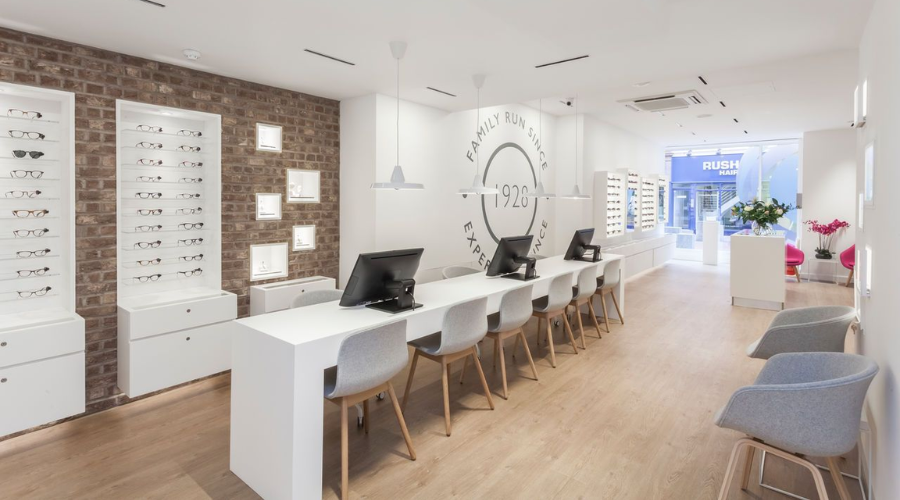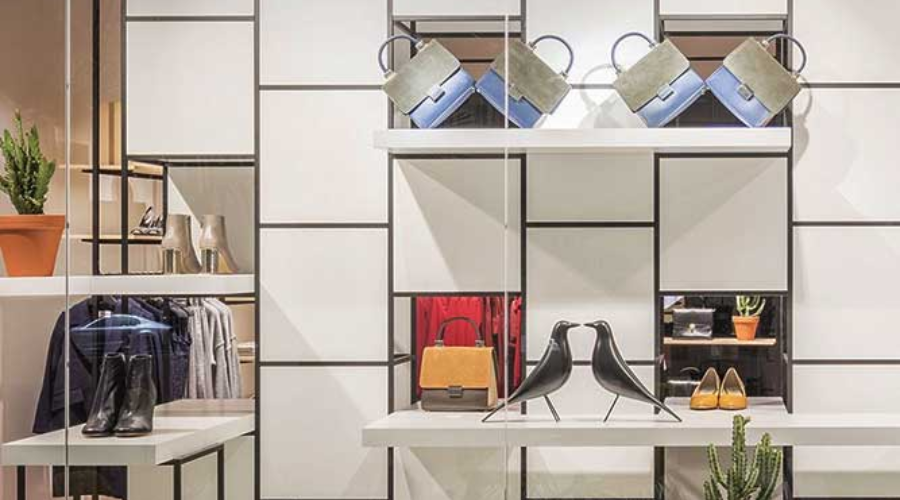In retail, successful design solutions are most essential. Product placement in your perfect store have a significant impact on your customers’ shopping experience, brand perception and sales. Especially in flagship stores, where the product range is typically broad and diverse. Creating an environment that facilitates easy navigation and product discovery is very crucial.
The article covers planning the layout of the showroom, the effective use of displays stands to orient customers, and informing about product categories while revealing the location of products. It also looks at how to ensure that all customers can comfortably interact with the displays.
Display & Stand Market is where you can get ideas to choose innovative solutions to improve the design of your business space and strategies to boost sales and visibility.
Layout planning for showrooms
The way your showroom is laid out affects how your customers will shop. It influences how customers move through the area, find items, and evaluate your brand.
Here are some tips for planning an effective showroom layout:
- Define clear pathways: Ensure that the layout directs customers through all sections of your showroom. This can be achieved by positioning your display stands to create an intuitive flow. For example, Ikea’s showroom follows a winding path layout that guides customers through all product sections.
- Zone your showroom: Divide your showroom into distinct zones based on product categories. This will make it easier for customers to locate the items they want.
- Leave enough space: Ensure sufficient space between display stands for customers to move around comfortably. This is not only important for a pleasant shopping experience but also for complying with accessibility regulations.
Display stands for guided customer flow
Display stands are necessary to managing the movement of clients through your showroom. When positioned strategically, they can create a visual path that leads customers on a journey through your product range.
Follow these strategies to guide customer flow with display stands:
- Highlight key products: Use display stands to highlight new arrivals, bestsellers, or seasonal items. Position these displays in high-traffic areas to attract customers and guide them into the showroom.
- Create a pathway with display stands: Arrange your display stands to create a pathway that customers can naturally follow. For instance, you can place stands in an ‘S’ shape or a ‘zig-zag’ pattern to create a visually guided path.
- Use display stands as dividers: Larger display stands can act as partitions to divide your showroom into different sections. Each is dedicating to a specific product category.
Display stands for clear product categorization
Product sorting is an important element of showroom design. Customers can find what they’re looking for and discover related goods with its assistance.
Consider these strategies for effective product categorization with display stands:
- Dedicated stands for each category: Use display stands for each product category to create distinct zones within your showroom.
- Signage: Use signage on your display stands to clearly mark product categories. Make sure the signs are easy to read from a distance.
- Consistent arrangement: Keep a consistent arrangement for products within each category. For example, arrange products by size, color, style, or price point.

Accessibility considerations
The most important aspect of showroom design is accessibility. Ensuring every customer can easily engage with the displays improves their shopping experience and increases the size of your client base.
Here are some accessibility considerations for display stand design:
- Height of displays: Ensure that products on display stands are within reach for all customers, including those using wheelchairs or mobility devices.
- Aisle width: Make sure there’s sufficient space between display stands for customers who use wheelchairs or mobility aids to move around comfortably. It’s also crucial for customers with strollers or shopping carts.
- The text size on signage: Use a large, clear font to make it easily readable for customers with vision impairments.
- Interactive elements: If your display stands include interactive elements like touch screens or buttons, ensure they are accessible and easy to operate for all customers.
- Lighting: Adequate lighting is vital, particularly around display stands. Ensure that your products are well-illuminated and that there are no dark areas that could pose navigational challenges.
Encouraging product discovery (expanded)
In retail stores, developing an atmosphere which promotes product discovery can elevate a regular shopping trip to a happy one. Product discovery is the process by shoppers discover new products in showrooms which they weren’t expecting to buy at first but ended up doing so.
Product sampling is a useful instrument for presenting something new to clients. This is particularly important for items like drinks, food items, flavors, or cosmetics. Display stands can feature sample products for customers to try, accompanied by testers, tasting cups, or sample packets.
For instance, a gourmet food store might offer samples of new cheeses or chocolates on a dedicated display stand. Similarly, a skincare retailer might have a display stand where customers can try samples of a new cream or serum. This enables buyers to personally test the goods before making a purchase.
Thematic displays
Thematic displays or “storytelling” stands can attract customers’ attention and encourage product discovery. These displays center around a specific theme, trend, or narrative. Themes could be based on seasons (summer, winter), occasions (Valentine’s Day, Christmas), trends (sustainability, minimalism), or narratives (the journey of coffee from bean to cup).
For example, a home decor store could have a “summer outdoor living” display, showcasing a mix of outdoor furniture, barbecue grills, garden accessories, and summer tableware. Customers coming in to buy one item might discover related products they hadn’t considered.
Endcap displays
These displays, or end-of-aisle displays, are prime real estate for product discovery. They are highly visible and receive a lot of foot traffic. Endcap displays can be used to feature new arrivals, seasonal products, or promotional items.
For example, a bookstore might use an endcap display to showcase new releases or staff picks. Customers who are passing by might be intrigued by a cover or title, pick up the book, and decide to buy it.
Interactive demos
Display stands with interactive demos can engage customers and make them more likely to discover and try out new products. This could include tech gadgets that customers can try out. DIY stations where customers can see how a product is used, or virtual reality headsets that allow to experience a product or service uniquely.
For instance, a flagship electronics store might have touch-screen display stand where customers can try out a new gaming console. Playing a game on the console allows customers to experience the product’s features firsthand, increasing the likelihood of them making a purchase.
By incorporating these strategies into your showroom design, you can create an environment that engages customers and encourages them to discover new products. This not only boosts sales but also makes shopping in your showroom a more enjoyable and memorable experience.

Cross-merchandising
Cross-merchandising is a retail strategy that involves displaying complementary products from different categories together to encourage add-on sales. This not only helps customers find items that go well together but also simplifies their shopping process and can lead to increased basket size.
Display stands are perfect for implementing this strategy. For instance, a display stand in clothing store could showcase a complete outfit, including a dress, matching shoes, a handbag, and accessories. Seeing these items together might inspire customers to purchase the whole outfit instead of just one item.
Another example could be a display stand in a home improvement store featuring all the items needed for a particular DIY project – paint, brushes, tape, drop cloths, etc. This not only inspires customers to undertake the project but also ensures they have all the necessary supplies, increasing the total sale.
Interactive displays
Interactive displays are a great way to engage customers and create memorable shopping experiences. These could include touch-screens, digital kiosks, augmented reality (AR) experiences, or any form of interactive content that engages the customer.
For example, a cosmetics store could have a display stand featuring a touch screen where customers can virtually ‘try on’ different shades of makeup through AR technology. This allows customers to see what the makeup will look like on them without actually having to apply it.
In another scenario, an electronics store could have a display stand where customers can test out new tech gadgets, like headphones or smart home devices. This allows customers to experience the product’s features and benefits firsthand, which can be a significant factor in their purchase decision.
Interactive displays are not only limited to tech-oriented products. Even in a bookstore, an interactive display might feature audio stations where customers can listen to excerpts from audiobooks.
By implementing these strategies, businesses can create a more engaging and dynamic shopping experience. This not only increases the chance of customers discovering new products but also leaves a lasting impression, making them more likely to return in the future.
Conclusion
Designing a showroom that facilitates easy navigation and product discovery requires careful planning and consideration. With effective planning and strategic use of display stands, you can create a pleasant and engaging shopping experience for all customers. Through this approach, you not only boost your sales but also strengthen your brand image in the minds of your customers.
If you found this article helpful, check out our website for more information about showroom display stands as well as other display stands for your business.

